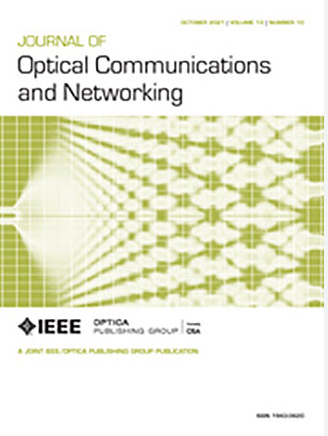Trajectory-based post-disaster content evacuation in inter-DC optical networks under cascading failures
IF 4.3
2区 计算机科学
Q1 COMPUTER SCIENCE, HARDWARE & ARCHITECTURE
引用次数: 0
Abstract
In the post-pandemic era, global working patterns have been reshaped, and the demand for online network services has increased significantly. Therefore, cross-data-center content migration has become a relevant problem to address, leading to higher attention in data backup/recovery planning. Beyond traditional pre-disaster content redundancy approaches, this work focuses on the challenge of rapid post-disaster content evacuation under the threat of cascading failures. In fact, due to the interdependence of data centers (DCs), inter-DC optical networks, and power grid networks, disasters may have a domino effect on these infrastructures, with their impact gradually expanding over time and space. In this paper, we propose two trajectory models that capture the dynamic evolution of cascading failures, and we propose a trajectory-based content evacuation (TCE) strategy that considers the spatiotemporal evolution of cascading failures to minimize content loss. Numerical results show that, when each DC needs to evacuate about 200 TB of massive content, TCE can reduce content loss by up to 25% compared to baseline strategies.级联故障下基于轨迹的dc间光网络灾后内容疏散
在大流行后时代,全球工作模式已经重塑,对在线网络服务的需求大幅增加。因此,跨数据中心的内容迁移已经成为一个亟待解决的问题,在数据备份/恢复规划中也越来越受到重视。在传统的灾前内容冗余方法之外,本工作重点关注在级联故障威胁下的灾后内容快速疏散的挑战。事实上,由于数据中心(dc)、数据中心间光网络和电网网络的相互依赖,灾难可能会对这些基础设施产生多米诺骨牌效应,其影响会随着时间和空间的推移而逐渐扩大。在本文中,我们提出了两个捕捉级联故障动态演化的轨迹模型,并提出了一种基于轨迹的内容疏散(TCE)策略,该策略考虑了级联故障的时空演化,以最大限度地减少内容损失。数值结果表明,当每个数据中心需要疏散大约200tb的海量内容时,与基线策略相比,TCE可以减少高达25%的内容损失。
本文章由计算机程序翻译,如有差异,请以英文原文为准。
求助全文
约1分钟内获得全文
求助全文
来源期刊
CiteScore
9.40
自引率
16.00%
发文量
104
审稿时长
4 months
期刊介绍:
The scope of the Journal includes advances in the state-of-the-art of optical networking science, technology, and engineering. Both theoretical contributions (including new techniques, concepts, analyses, and economic studies) and practical contributions (including optical networking experiments, prototypes, and new applications) are encouraged. Subareas of interest include the architecture and design of optical networks, optical network survivability and security, software-defined optical networking, elastic optical networks, data and control plane advances, network management related innovation, and optical access networks. Enabling technologies and their applications are suitable topics only if the results are shown to directly impact optical networking beyond simple point-to-point networks.

 求助内容:
求助内容: 应助结果提醒方式:
应助结果提醒方式:


